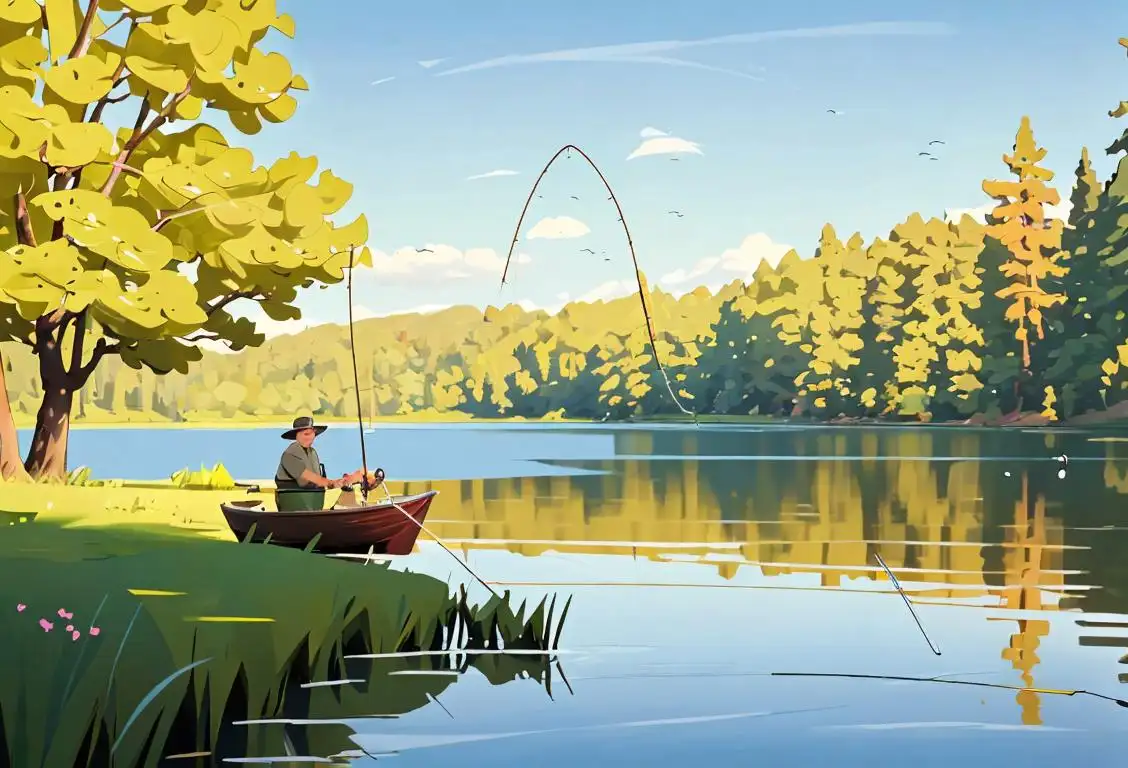National Palm Tree Day

Welcome to National Palm Tree Day! Get ready to bask in the shade of some interesting facts and celebrate these iconic trees. Whether you're daydreaming about tropical paradise or just want to feel the beach vibes, National Palm Tree Day is the perfect time to appreciate these towering wonders of nature.
When is Palm Tree Day?
It's national palm tree day on the 25th October.
The Internet History of National Palm Tree Day
If you're wondering how National Palm Tree Day came to be, you might assume it was created by a group of coconut vendors or sunblock manufacturers. However, the actual origins of this delightful day are rooted in the vibrant online world. It all started with a tweet.
On October 25, 2016, social media exploded with mentions of palm trees. People shared photos of their favorite palm-lined beaches, emojis of swaying palms, and even tips on how to keep palm trees happy and healthy. The enthusiasm was contagious, and soon enough, National Palm Tree Day was born.
Since that fateful day, the internet has celebrated National Palm Tree Day every year, turning it into a virtual luau of palm-filled joy. It's a day to send tropical-themed gifs to your friends, share breathtaking palm tree pictures, and dream about sipping piña coladas on a hammock under the shade of a towering palm.
Fun Facts About Palm Trees
Did you know that there are over 2,500 species of palm trees? That's a whole lot of palm power! From the mighty coconut palm to the delicate lady palm, these trees come in all shapes and sizes. Plus, some palm trees can live for hundreds of years, spreading tropical vibes throughout multiple generations.
So, next time you see a palm tree, give it a little nod and say, 'Thanks for making the world a little sunnier!' And remember, every day can be a mini National Palm Tree Day if you keep that sunny spirit in your heart.
History behind the term 'Palm Tree'
3500 BCE
Ancient Beginnings
Palm trees have their roots in ancient civilizations, with evidence of their existence dating back to 3500 BCE. These tall, majestic trees were first cultivated and utilized by the ancient Egyptians, who considered them to be sacred symbols of life and fertility. The Egyptians used palm trees for various purposes, such as providing shade, constructing buildings and boats, and extracting materials for making ropes and fabrics.
600 BCE
Greek and Roman Influence
The influence of palm trees spread to ancient Greece and Rome around 600 BCE. The Greeks admired the elegance and beauty of palm trees and associated them with victory, honor, and triumph. They commonly depicted palm trees in their artwork, especially on pottery and frescoes. Similarly, the Romans embraced the palm tree as a symbol of victory and military achievement, often adorning triumphal processions with palm branches.
7th Century CE
Islamic Appreciation
Palm trees played a significant role in Islamic culture, particularly during the time of Prophet Muhammad in the 7th century CE. The Date Palm (Phoenix dactylifera) became highly esteemed among Muslims due to its numerous benefits and association with paradise. Date palms provided a vital source of sustenance in arid regions, offering nutritious fruits and shade from the scorching sun. Islamic architecture and art frequently featured palm motifs, symbolizing abundance and eternal life.
15th Century
Explorations and Palm Discovery
During the age of exploration in the 15th century, European explorers encountered palm trees during their voyages to tropical regions. The Spanish conquistadors, in particular, encountered the coconut palm (Cocos nucifera) in the Caribbean and Pacific islands. The coconut palm, with its versatile uses and delicious fruits, quickly captured the attention of explorers and became known as the 'tree of life' due to its ability to provide food, shelter, and materials for survival.
19th Century
The Rise of Palm Tourism
In the 19th century, the allure of palm trees became a major attraction for tourists seeking exotic destinations. The discovery of tropical paradise destinations like Hawaii, Florida, and the Caribbean islands fueled the desire to experience the beauty and tranquility of palm-lined beaches. Palm trees became iconic symbols of these tropical getaways, symbolizing relaxation, paradise, and escape from the demands of modern life.
Present
Palm Trees in Pop Culture
Today, palm trees are deeply ingrained in popular culture worldwide. They symbolize a carefree and laid-back lifestyle associated with coastal living, vacation destinations, surf culture, and even tiki-themed parties. Palm trees continue to be featured in movies, art, advertisements, and music, serving as a visual representation of paradise and relaxation. Whether swaying gently in a tropical breeze or adorning picturesque landscapes, the allure of palm trees transcends time and continues to captivate people's imagination.
Did you know?
Did you know that there are over 2,500 species of palm trees? That's a whole lot of palm power!Tagged
fun natureFirst identified
25th October 2016Most mentioned on
25th October 2016Total mentions
29Other days
Arbor Day
Squirrel Appreciation Day
Bat Appreciation Day
Go Fishing Day
Turtle Day
Badger Day
Public Lands Day
Hunting And Fishing Day
Tree Planting Day
Take A Walk In The Park Day









